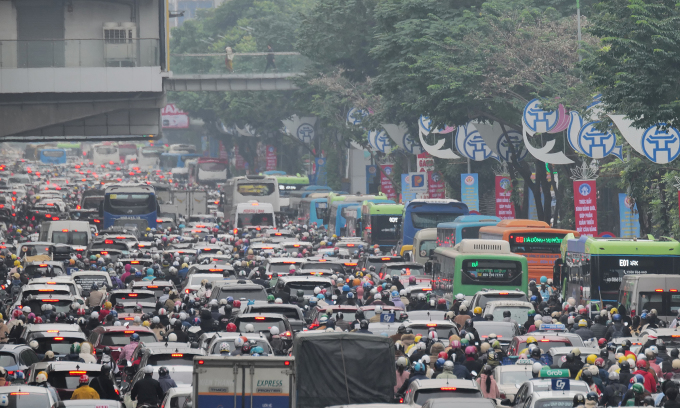Hanoi suffers years of excessive fine dust levels
Le Hoai Nam, deputy head of the Pollution Control Department at the Ministry of Natural Resources and Environment, said at a Thursday conference air quality surveys from 2019 have shown that the air in major cities are being polluted, especially those like Hanoi and its northern neighbors Hai Phong, Bac Ninh and Hai Duong.
Fine dust has been identified as a major contributor to air pollution. Surveys in the 2022-2023 period revealed the average levels of PM2.5 in Hanoi, Bac Ninh and Thai Nguyen all exceeded standards. Hanoi in particular recorded average PM2.5 levels at 26-52 micrograms per normal cubic meter (μg/Nm3), 1.1-2.1 times higher than national standards.
The World Health Organization (WHO) recommends that annual average concentrations of PM2.5 should not exceed 5 micrograms per cubic meter (μg/m3). The conversion from μg/Nm3 to μg/m3 depends on the actual temperature and pressure of the measurement conditions.
This year, Hanoi recorded four periods of severe air pollution, with three periods between January and April, and one in early October. Pollution periods are mainly focused from October to March of the following year due to unfavorable weather conditions in the north, such as low rainfall and little wind, causing dust to linger and contribute to air pollution. The main sources of emissions include traffic, industry and construction.
Nguyen Minh Tan, vice director of the Hanoi Department of Natural Resources and Environment, said surveys and studies revealed that fine dust particles, specifically PM2.5 and PM10, play a large role in Hanoi’s air pollution problem.
As the level of PM2.5 increases, around 1,100 people would have to be hospitalized every year on average due to cardiovascular issues, while 3,000 would be hospitalized due to respiratory diseases, he said.
“If the PM10, PM2.5 levels increase by 10μg/m3, the number of hospitalized children due to respiratory issues in Hanoi would increase by 1.4% and 2.2%, respectively,” Tan said, adding that air pollution in the 2011-215 period plunged people’s income down by 20% in downtown areas.
To improve air quality, Tan said the department would focus on dealing with the main source of emission: traffic. The city is also establishing low-emission zones and increasing the budget for street cleaning, congestion reduction and public transport.
Tan also requested the department to build cooperation mechanisms between the environment ministry and different localities to exchange environmental data, as well as building programs to deal with pollution issues affecting multiple localities.
Environment minister Do Duc Duy said pollution in major cities have been worsening to alarming levels over the last decade. Measures to manage air pollution and minimize their impacts on people’s health and socio-economic development need to be done promptly, he added.


Comments are closed.